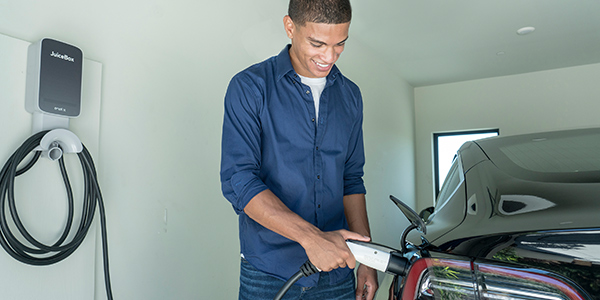Utilities need to offer electric vehicle rate designs that will encourage customers to use EVs in the most efficient ways possible, such as utility-managed charging, according to Rachel Gold, director of the utilities program at the American Council for an Energy-Efficient Economy.
“A lot of utilities around the country are offering rate designs [for grid services],” Gold said during a National Association of Regulatory Utility Commissioners Winter Policy Summit panel discussion Wednesday. But “there are very few utilities that are offering managed charging programs right now.”
She also discussed utilities’ role in charging infrastructure deployment.
“Most of the investment that we’ve seen [by utilities] has been targeted at the traditional role of the utility as an infrastructure company,” Gold said, especially, she added, in Level 2 charging infrastructure.
She said utilities could focus on incentivizing investments in fast charging infrastructure, specifically fast charging usage by EV fleets.
Within charging infrastructure investment strategies, utilities have been successful in targeting opportunities to address multiple market and community benefits at once.
“We’ve seen utilities targeting low-income, economically distressed or environmental justice communities,” Gold said. “We’ve also seen targeting at bus charging or medium- and heavy-duty fleet charging in places where there’s an air quality benefit and, in particular, where there’s an air quality benefit that overlaps with low-income communities.”
Colorado’s Approach
Colorado Public Utilities Commissioner John Gavan said utilities in his state were directed by law in 2019 to develop transportation electrification plans that would help the state reach its target of putting 940,000 EVs on the road by 2030.
“Today we only have 33,000 EVs on the road, with less than 4,000 charging ports across the entire state,” he said. “Growing to a 940,000-vehicle level — which would be half our cars — by 2030 represents a huge shift for the state.”
While most of the utility plans on transportation electrification in Colorado focus on building out charging infrastructure, regulators worked to ensure utility activity does not conflict with the emerging private charging economy, Gavan said.
He said that the initial charging infrastructure deployments under the transportation electrification plan from Xcel Energy Colorado focused on multifamily dwellings and lower-income neighborhoods. The utility is also focusing on Level 2 and fast charging deployments for areas that do not support a strong commercial business case.
Gavan said that the PUC has allowed Xcel to own EV charging infrastructure and promote managed charging, “but we did not support a broad EV purchase rebate.” The commission instead targeted the rebate program to income-qualified buyers.
That program investment, he said, totals $107 million over three years and carries a monthly bill impact of 68 cents per ratepayer.



